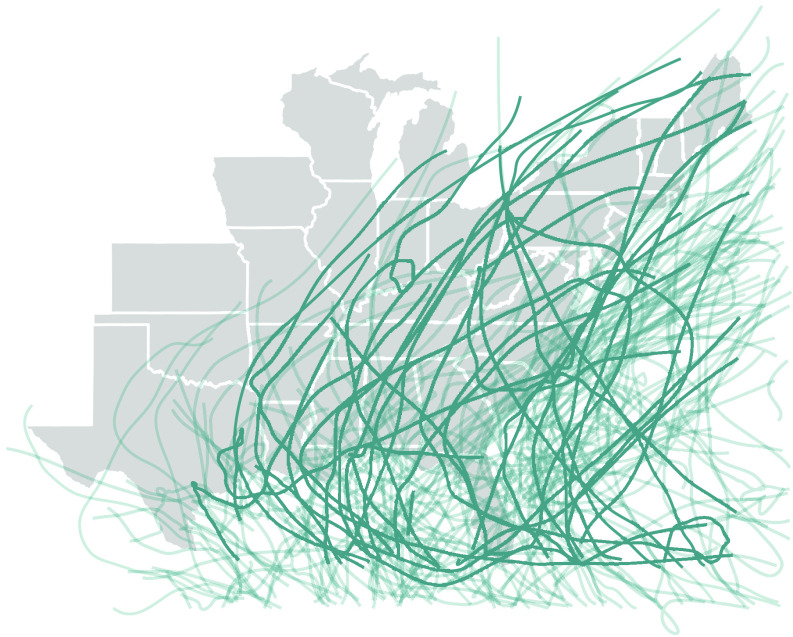Figure 1.
Study area and storms considered in this study. All counties in the states shown in this map were investigated. The lines show the paths of the study storms, which included all tracked storms in 1988–2018 that are recorded in HURDAT2 and that came within of at least one U.S. county. Thicker lines show the tracks of storms whose names have been retired, indicating that the storm was particularly severe or had notable impacts.

